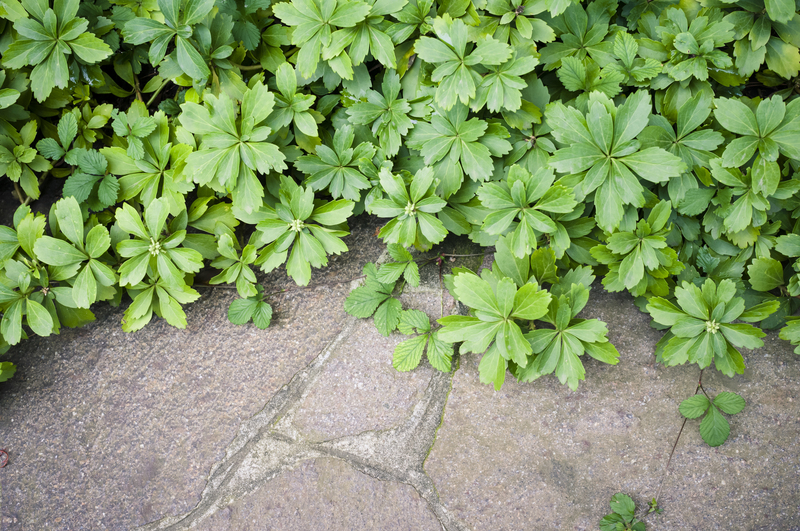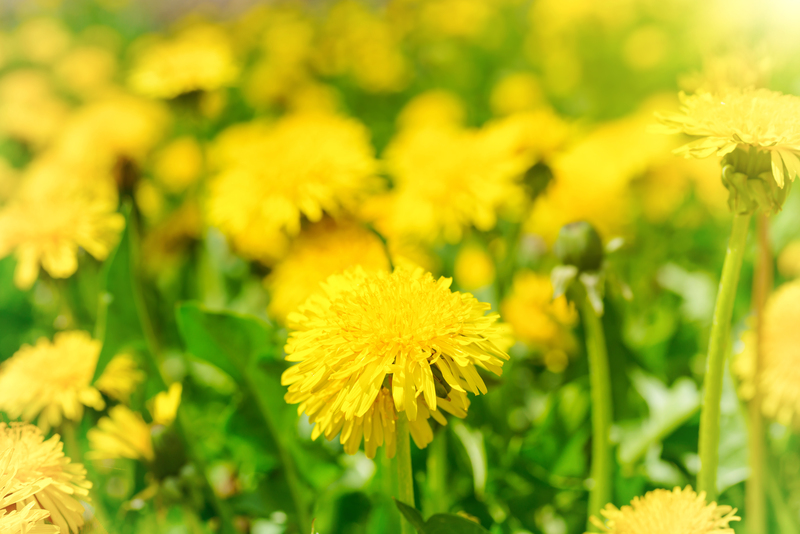Conquer Your Lawn: 3 Weed Control Tips That Work
Posted on 01/09/2025
Conquer Your Lawn: 3 Weed Control Tips That Work
A lush, green lawn is the pride of any homeowner, but maintaining one can be a real challenge -- especially when weeds start to invade. Weed control is an essential part of lawn care, and without it, pesky intruders can quickly overtake your landscape, stealing vital nutrients and water from your prized grass. If you're ready to conquer your lawn and restore its beauty, you're in the right place. In this comprehensive guide, discover effective, proven, and sustainable weed control tips that actually work. Here's your roadmap to a weed-free, vibrant yard.
Understanding Lawn Weeds: Why They Appear
Before diving into the best methods for weed control, it's important to understand what causes weeds to invade your lawn. Weeds -- such as crabgrass, dandelions, clover, and chickweed -- are opportunistic plants that thrive in areas where your grass is weak or thin. Common causes of weed infestations include:
- Poor soil fertility
- Improper mowing practices
- Over- or under-watering
- Lack of lawn maintenance
- Compacted soil
When your grass isn't healthy enough to outcompete these invaders, weeds quickly colonize open spaces. The secret to conquering your lawn is to create an environment where grass is thriving and weeds stand little chance.

3 Effective Weed Control Tips for a Healthier Lawn
Let's dive into the top three weed control strategies that will help you maintain a beautiful, weed-free lawn all season long. Each tip combines proactive care with proven practices, backed by landscaping experts and real-world success.
1. Promote Dense, Healthy Grass -- The Ultimate Natural Weed Barrier
The best defense is a good offense. Thick, healthy grass naturally chokes out weeds, making it much harder for them to take hold. If your lawn is lush, weeds will have fewer opportunities to sprout. Here's how to create a resilient, vibrant lawn:
- Mow at the Right Height: Never cut more than one-third of your grass at a time. Taller grass shades the soil, keeping it cooler and denying sunlight to weed seeds. For most grass types, a height of 2.5-4 inches works best.
- Water Deeply but Infrequently: Instead of shallow daily waterings, aim to provide 1 inch of water once or twice per week. Deep watering encourages deeper root growth, making turfgrass more competitive.
- Fertilize Properly: Apply a balanced slow-release fertilizer in early spring and again in early fall. Healthy, nourished grass grows thick and strong, leaving fewer opportunities for weeds.
- Overseed Thin Areas: If you notice bare patches, overseed in the appropriate season to prevent weeds from filling in those gaps. Use a quality blend that matches your existing grass.
If you follow these lawn care principles, your yard becomes its own best weed control system, suppressing most common invaders before they gain a foothold.
2. Use Mulch to Block Weed Growth
In garden beds, around trees, and along lawn borders, mulch is an incredibly effective weed barrier. It not only enhances soil health and retains moisture but also crowds out light-hungry weed seeds. Here's how to use mulch for maximum weed prevention:
- Apply a 2-3 Inch Layer: Organic mulches like wood chips, shredded bark, or compost work well. Spread evenly, leaving spaces around plant stems to avoid rot.
- Refresh Regularly: Over time, mulch will break down and thin out. Top it up each year, especially in spring, to maintain a thick barrier against weed seeds.
- Landscape Fabric: In beds with aggressive perennial weeds, install a layer of landscape fabric under your mulch for extra protection. Cut holes as needed for ornamental plants.
Are you dealing with particularly stubborn weeds? Coarse mulches and even a double-layer of newspaper or cardboard under your mulch can block sunlight and smother existing weeds. Mulch not only boosts your yard's appearance but also reduces the work you'll have to do pulling weeds later.
3. Apply Targeted Weed Control Products
There's no shame in using quality weed control products when hand-pulling isn't enough. The trick is to use them wisely and safely. Here's what you need to know:
Pre-Emergent Herbicides
- What They Do: Prevent weed seeds from germinating by creating an invisible barrier in the soil. Especially effective against crabgrass, annual bluegrass, and other annual weeds.
- When to Apply: Apply in early spring (when soil temps reach about 55?F) or fall, before seeds germinate. Water in thoroughly as directed on the label.
- Note: Pre-emergent products won't control existing weeds -- they're preventative and very effective for broad areas or high-risk spots.
Post-Emergent Herbicides
- What They Do: Kill weeds that have already appeared in your lawn. Available in selective (targets only weeds) and non-selective forms (kills everything green).
- Selective Herbicides: Choose a formulation designed for the weeds you have (broadleaf, grassy, etc.) and for your lawn type.
- Spot-Treat When Possible: Apply directly to individual weeds or patches rather than blanketing your entire lawn, reducing chemical use and potential turf damage.
Always read and follow label instructions carefully! Remember that improper use can harm your lawn or beneficial plants. If in doubt, consult a local extension service or lawn care professional for advice on the best products for your region and grass type.
Additional Proven Strategies for Long-Term Weed Control
Beyond the three foundational weed control tips above, these extra steps will further boost your lawn's defenses:
- Hand-Pull Young Weeds: It's old-fashioned, but for isolated weeds, nothing beats hand-pulling. Get them when soil is moist, making sure to remove the entire root.
- Avoid Scalping the Lawn: Cutting your grass too short weakens it and exposes the soil, which can invite weed growth. Stick to recommended mowing heights for your particular grass species.
- Dethatch and Aerate: Thatch buildup and compacted soil can create ideal conditions for weeds. Aerate your lawn every 1-2 years and dethatch if you see a thick layer of organic debris.
- Corn Gluten Meal: As an organic pre-emergent, this byproduct of corn milling can help suppress seed germination naturally (though it's less potent than synthetic options).
- Don't Let Weeds Go to Seed: Remove seed heads from dandelions and other weeds quickly to prevent re-seeding throughout your lawn.
By staying vigilant and integrating these best practices, you'll help ensure a weed-free lawn for seasons to come.
When to Call a Professional for Weed Control Help
For most homeowners, a proactive approach and timely use of weed management strategies will keep your grass looking gorgeous. However, if you face a severe weed outbreak, tough perennial weeds (like nutsedge or bindweed), or chemical-resistant varieties, it may be time to consult a lawn care professional.
- They can identify the exact weed species and the most effective treatments.
- Professionals have access to specialized products and application methods for worst-case scenarios.
- Year-round, customized lawn care plans are available to maintain peak health and appearance.
Don't be afraid to seek expert advice when weeds seem overwhelming. Your lawn's beauty and health are worth the investment.
Eco-Friendly and Organic Weed Control Alternatives
Many homeowners today are conscious of minimizing chemical use. Fortunately, there are several natural weed control methods that can be effective, especially when combined with the foundational tips above:
- Vinegar: Horticultural vinegar (with higher acetic acid content) can be sprayed directly on young weeds, but use caution near ornamental plants as it's non-selective.
- Boiling Water: For cracks in sidewalks and patios, boiling water kills weeds on contact -- just be careful to avoid desirable plants.
- Manual Weeding Tools: Use specialized weed pullers or hoes to remove weeds quickly from lawns, beds, and borders.
- Corn Gluten Meal: As mentioned, it's a natural pre-emergent -- just be aware it won't work on existing weeds and requires annual application.
Commit to a sustainable lawn care strategy that minimizes reliance on chemical herbicides, especially where children and pets play.

Frequently Asked Questions About Lawn Weed Control
Q: How often should I treat my lawn for weeds?
A: The frequency depends on the severity and type of weeds you're combating. Most lawns benefit from a pre-emergent treatment in spring and as-needed spot treatments during the growing season. Maintaining healthy grass is your best ongoing defense!
Q: Can I pull weeds by hand instead of using chemicals?
A: Absolutely! Hand-pulling is effective for isolated weeds or small patches -- just be sure to remove the roots. For larger lawns or when weeds are widespread, integrating other control measures may be more practical.
Q: How soon can I fertilize after applying weed control products?
A: Always check the product label, but as a general rule, wait 2-4 weeks after using pre-emergent or post-emergent herbicides before applying fertilizer. This ensures your grass isn't stressed or susceptible to chemical burn.
Conclusion: Take Back Your Lawn, One Weed at a Time
A beautiful, thriving lawn is within your reach -- without constant battles. Harness these three proven weed control tips: strengthen your turfgrass, use mulch as a barrier, and apply targeted products wisely. Combine them with regular maintenance for a comprehensive, season-long weed management plan.
Remember: The healthiest lawns are the most weed-resistant. Be patient, stay consistent, and soon you'll enjoy a verdant, envy-inducing lawn that is the highlight of your landscape.
If you're committed to conquering your lawn and achieving true curb appeal, start implementing these weed control techniques today. Your perfect lawn awaits!

